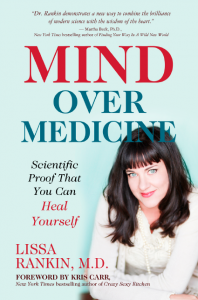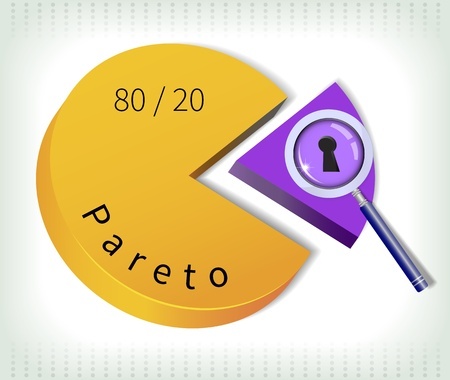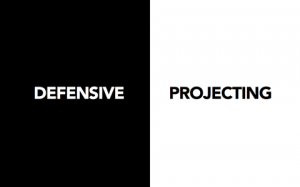 You’re a leader. And now, you want to move from good to great! What’s it going to take?
You’re a leader. And now, you want to move from good to great! What’s it going to take?
You’ve read, even studied the inner workings of emotional intelligence. You’re bringing it to light more and more in your daily routine. Now what’s all this about Focus?
What does Emotional Intelligence have to do with Focus? And why should you care?
Because you can’t reach your potential as a leader without it! Period!
The guru of emotional intelligence has written succinctly on both. There is a practical, meaningful link that will impact your leadership – whatever your style, wherever you are geographically and regardless of the type of organization you lead.
How has he answered the question about the connection between EQ (emotional intelligence) and Focus?
According to Goleman, emotional intelligence requires self-awareness—awareness of our own minds and emotions—as well as empathy, both of which can be cultivated by honing our skills of attention.
“When I set out to write this book, I knew I was going to explore the explosion of new important research about attention,” says Goleman. “But what I didn’t realize was that it was going to lead me back to emotional intelligence.”
Paying attention is critical. Goleman talks about focus on inner, other and outer.
Daniel Goleman: The fundamental thing to understand about inner focus is that we can be aware of our own awareness. There is such a thing as meta-awareness, meta-cognition, meta-emotion—the perspective we can take that allows us to monitor our inner world rather than just be swept away by it. That, in turn, gives us a point of leverage for handling that inner world better—without it, we’re lost.
For example, in Emotional Intelligence I looked at distressing emotions, which are generated by the brain’s amygdala and emotional threat. In order to manage the amygdala hijack, you have to be aware that it’s happening. Meta-awareness becomes the fulcrum from which you can handle emotions, handle your inner world, handle the thoughts which generate upsetting emotions or which help you, in a positive way, manage them for the better.
Great leaders pay attention – to people, strategy, arising situations. AND THEIR INNER WORLD. And they do so with focus.
So what about other focus?
Does that mean they don’t attach to the technological tools that often distract the rest of us? A resounding NO! is the answer. Great leaders are more strategic about their use of tools and time.
Goleman says that we are all “under siege” so concentrating on Focus is particularly timely now.
And leaders lead other people – often in challenging situations.
He says: … “being able to focus on the other person rather than the text you just received has become the new fundamental requirement for having a relationship with that person. And I think this is another reason to develop a meta-awareness about where our attention has gone. I think we need to make more effort and cultivate more strength to detach [our attention] from that thing that is so tempting over there, and bring it back to the person in front of us.”
Finally , the third kind of focus – is systems focus. Again Goleman says, “This is more elusive. We have dedicated [brain] circuitry for self-management, self-awareness. We have dedicated circuitry for empathy. The brain doesn’t have the equivalent of that dedicated circuitry for sensing, for instance, the ways in which humans systems of construction, energy, transportation, industry, and commerce are inexorably deteriorating global systems that support life. It’s too macro or too micro for sensory systems in the first place.”
We literally don’t perceive global warming directly in the way we see a person’s wince or wink, and register that immediately. We don’t have an alarm system for that like the way we hear a growl—a growl alerts the amygdala and springs the stress hormones into action. But when it comes to global warming, actually, the brain shrugs. It’s something we have to learn about and learn to care about and learn to detect indirectly, so it’s a bigger stretch. We care about the present far more than the distant future, which is invisible—we don’t notice it.
The neuroscience behind this?
For example, meditation is, from a cognitive science point of view, the retraining of attention—a bulking up of the neural circuitry that allows you to detach from where your mind has wandered, bring it back to the point of focus, and keep it there. That is the basic repetition of the mind in any kind of meditation. And that’s also what builds up the willpower to resist the pull of electronics and stay with the human world.
And meditation comes in many flavors. As a leader, you can choose anything from breathing exercises to martial arts, yoga to mindfulness practice, Qigong to observing a candle flame and everything in between.
Again, Goleman – “From a neuroscience point of view, I think the standard way this has been approached is exactly the wrong way to get people to care and act about global warming. Mainly they either threaten us with destruction or guilt trip us. That activates centers in the brain for negativity, for distressing emotions. And when we feel distressing emotions, the brain wants us to turn them off—either tune them out or do one little thing [to make us feel better]. And I think that’s one of the main reasons why the environmental movement has had such a poor record of getting the general public to do much about the environmental crisis.”
There is a more clever way of getting people involved: Rather than looking at footprints, which is all the bad that we’re doing, look at hand prints, which is the sum total of all the good things we do to lower our footprint.
This is the brainchild of Gregory Norris, who is at the Harvard School of Public Health. The hand print approach means that you get points for every time you ride your bike to work or walk instead of ride, when you recycle, when you print on both sides of the paper, when you don’t print at all. All of those things that help can be counted, and the idea is to grow your hand print rather than your footprint. That is a goal we can work toward in small baby steps that are manageable and that we can feel good about. And that motivates the parts of the brain which keep us working toward our goals.
So great leaders need to MOTIVATE their peeps and do it in a way that leads their teams to care about, think about and work on systems ( the invisible future) in the ways they care about the more immediate emotional and situational events arising now.
And while there is growing concern about young people’s ability to focus, Goleman is encouraging. He covers in the book, that focus is to a certain extent under our control—that it’s a skill we can build.
Goleman: … “we do have to work at building it. And for that reason I really advocate an intention-strengthening exercise as a kind of mental fitness that we practice daily, just as you might jog.”
Goleman, the former New York Times science journalist turned best-selling author, is perhaps still best known for his 1995 book Emotional Intelligence, which was followed by Social Intelligence more than a decade later. Like those earlier works, Focus synthesizes findings from years of research across the social, behavioral, and cognitive sciences—in this case, on the roots and importance of our attention skills.
So as a leader on the road to greatness, begin practicing focus – the art and science of paying attention. Like all practice, it requires a strong intention, and the self-compassion to overcome the inevitable hurdles that arise. Yet, paying attention pays off – big time. So what’s it going to be? Choose a practice and get an accountability partner on your side. Hire a coach, join a Mastermind Group, but do something because its clear, great leaders pay attention!
What are some tips you use to focus?









